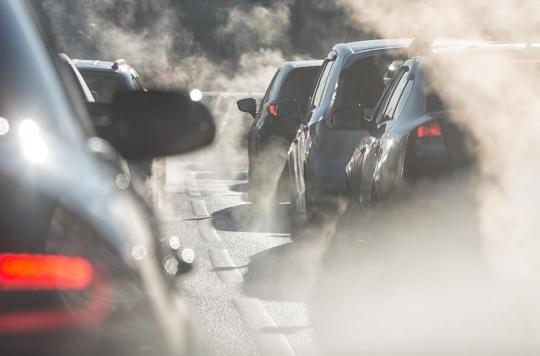Long-term exposure to soot carbon, a constituent of fine particles linked to automobile traffic, increases the risk of cancer, particularly of the lung.

- In 2013, the International Agency for Research on Cancer (IARC) classified all fine particles as definite carcinogens for humans.
- People most exposed to soot carbon have an excess risk of cancer in general of about 20% and 30% for lung cancer.
- The Respire association has decided to file a complaint against the RATP for “aggravated deception” and “involuntary injuries” due to pollution.
Every year, around 50,000 people die from air pollution in France, according to data from Public Health France dating from 2016. It is the second cause of preventable death behind tobacco, which accounts for approximately 73,000 deaths per year, according to figures from Public Health France published in 2013. To better understand “how the different compounds of this pollution affect health”, Inserm researchers have studied carbon soot, a constituent of fine particles resulting from incomplete combustion in particular linked to car traffic. According to their work, presented on March 24 in the journal Environmental Health Perspectivelong-term exposure to black carbon is associated with an increased risk of cancer, particularly of the lung.
20,000 people followed since 1989
The link between pollution and cancer is not new. “In 2013, the International Agency for Research on Cancer (IARC) also classified all fine particles as certain carcinogens for humans.”, recalls Inserm in a press release. The details of the health effects of the compounds of these particles were not known. “Several candidates are being studied to explain their adverse health effectscontinues the Institute. This is particularly the case for soot carbon (or “black carbon”), a constituent of fine particles resulting from incomplete combustion.” The World Health Organization (WHO) has identified this compound as having a deleterious impact on health.
In this study, researchers assessed the association between long-term soot carbon exposure and lung cancer.”to better understand the role of this compound in the deleterious health effects of air pollution”, specifies Inserm. For this, they relied on data from a cohort of around 20,000 people followed every year since 1989.”Based on these data, the researchers determined the degree of association between the level of pollution in participants’ homes since 1989 and the risk of developing cancer in general or lung cancer in particular.. Thanks to statistical models adjusted to take into account other risk factors and to overcome the concomitant effect of fine particles, of which soot carbon is a part, they were able to specifically show the association between soot carbon and the risk of cancer..”
A 30% increased risk for lung cancer
The study suggests that the higher the levels of soot carbon exposure in participants’ homes, the greater the risk of lung cancer. The people most exposed to soot carbon since 1989 thus presented an excess risk of cancer in general of about 20% compared to the least exposed people. This excess risk was 30% for lung cancer. This compound could therefore partly explain the carcinogenic effects of air pollution. “These unpublished results on the incidence of cancer and which come to reinforce an already existing scientific literature on other health problems, are important to guide the public decision with regard to the regulation of the air pollution and the policies. sanitary”, assures Inserm.
“At the individual level, it is difficult to recommend measures that can be taken to limit exposure to black carbon from ambient air particles. Nevertheless, it is possible to adjust public policies if we manage to show which are the most harmful pollutants in air pollution. We therefore hope that our results will contribute to extending the knowledge to guide and refine these policies, for example by taking specific measures against soot carbon which mainly comes from automobile traffic.”, emphasizes Bénédicte Jacquemin, researcher at Inserm and author of the study.
An association files a complaint against the RATP because of pollution in the metro
The Respire association, founded in 2011 and which has since regularly denounced excessive pollution levels in the metro and RER, has decided to file a complaint against the RATP for “aggravated deception” and “unintentional injuries”. This follows the refusal of the RATP to recognize the too high concentration of fine particles, estimated eight times higher underground than in the outside air by a study carried out by the association with the CNRS and published last January. These microparticles come from the braking of trains, from the outside air imported by air vents and by construction sites.
“We want the RATP to come out of omerta and the policy of the ostrichdeclares Olivier Blond, the president of Respire, at Parisian. Normally, 4 million people use the metro every day. It is shocking to continue to tell users that everything is fine when the numbers are so bad! The denial of the RATP is an essential component of the problem. We are filing a complaint for deception so that it sets up real passenger information and a measurement system on its entire network, not just on two or three stations.”
The RATP defends itself by insisting on the fact that the health studies carried out on its agents for more than thirty years do not make it possible to observe any toxic effects of the quality of the air on their health. In a press release published on Tuesdayshe “would like to point out the solidity and robustness of its action plan to monitor, inform and improve air quality in its underground spaces. The air quality of the underground network is subject to very scrupulous and completely transparent monitoring by the RATP”.
.















